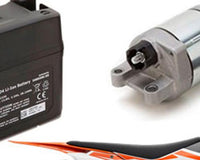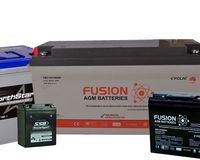Table of Contents
This is a common dilemma among most battery buyers. Mainly because alkaline batteries are more popular than lithium, but lithium batteries offer better performance.
So, which way should you go?
We will help you make up your mind by breaking down the main differences between lithium and alkaline AAA (triple-A) batteries.
We’ll start with some basic information.
A typical AAA battery measures approximately 44.5mm (1.75in) long, including the positive terminal button, which is 0.8mm (0.031in) It has a diameter of 10.5mm (0.41in).
Keep in mind that there are different kinds of lithium AAA batteries with voltage as high as 3.7V. An example is lithium ion batteries (Li-ion) which are rechargeable and used in laptops and tablets.
But our focus is on the 1.5V lithium AAA battery, which is a perfect substitute for the 1.5V alkaline AAA battery.
The materials used to make lithium AAA batteries differ from those used on their alkaline counterparts. This causes a significant difference in the performance and usage of these batteries.
Let’s look at these differences.
Chemistry of AAA Alkaline and Lithium Batteries
Chemistry of AAA Alkaline and Lithium Batteries
The chemical name for lithium AAA batteries is lithium iron disulphide or Li/FeS2, while alkaline batteries are alkaline manganese dioxide batteries. This gives us an idea of the chemical energy each battery uses to generate electrical energy.
Alkaline AAA batteries use zinc and manganese oxide as the electrodes and potassium or sodium hydroxide as the alkaline electrolyte.
As for lithium AAA batteries, they all have metallic lithium in the anode.
The cathode can be iron sulphide powder combined with powdered graphite. The electrolyte can be a lithium compound — also known as a lithium salt — dissolved in an organic solvent.
Capacity of the Batteries
A battery’s capacity refers to the maximum amount of energy that can be extracted from the battery over time. It can be rated in milliamp Hour (mAh).
The higher the mAh of a battery, the longer the shelf life.
If, for instance, a battery has a capacity of 800 mAh, it will supply 800 milliamps for one hour or 400 milliamps (mA) for two hours.
With this in mind, alkaline AAA batteries feature a capacity of 850-1,200 mAh, depending on the type. Lithium batteries, on the other hand, have a capacity of 1,200 mAh.
Lithium AAA batteries also have a low self-discharge compared to their alkaline counterparts, which further contributes to their long shelf life.
Usage of Lithium and Alkaline Batteries
The uses of lithium and alkaline AAA batteries differ due to several factors:
Weight
A Lithium AAA battery weighs about 33% less than an alkaline AAA battery. This is because lithium is light — it’s the lightest metal and lightest solid element under standard conditions.
It makes lithium AAA better for portable devices and alkaline AAA batteries the better choice for corded items.
And given that lithium batteries perform in extreme temperatures (as low as -40°C), it is ideal for outdoor use.
Internal Resistance
Internal resistance is the restriction a battery encounters when trying to provide the needed power. Low resistance means the battery can provide the extra power necessary for moderate to heavy loads.
A lithium AAA battery has a low internal resistance and a flat discharge curve. This makes it suitable for moderate to heavy loads.
An alkaline AAA battery, on the other hand, has a high internal resistance, which causes the voltage to drop. This makes it a better choice for low-drain items.
Shelf Life
Shelf life refers to the period in which the battery delivers over 95% of its original capacity.
The long shelf life of a lithium AAA battery makes it suitable for electronics and other home devices that have a complicated or inconveniencing battery-changing process.
With these factors in mind, here are a few examples of common uses of these battery types.
| Alkaline AAA batteries | Lithium AAA batteries |
| Microphones | Digital cameras |
| Carbon monoxide detectors | Medical gadgets |
| Low-drain headlamps and other lighting devices | Radio communication devices |
| Toys | Surveillance systems |
| Clocks and remote controls | High-drain toys |
Cost-Effectiveness
Price is another major difference between the two batteries.
An AAA lithium battery will cost you more than the alkaline variety. But, it can be more cost-effective.
This is because an alkaline battery has a shelf life of up to 10 years, while lithium can last up to 15 years, with brands like Energizer Ultimate Lithium lasting 20 years.
A AAA lithium battery also provides superior performance in that:
- It operates well even in extremely low temperatures.
- It has a lower internal resistance.
FAQ
Are Lithium AAA Batteries Dangerous?
Lithium AAA batteries are not dangerous if stored under the right conditions — between -40°C to 50°C.
Exposing a lithium battery to temperatures above 50°C can shrink the protective insulating label in battery brands like the Energizer Ultimate Lithium. This increases the risk of external short circuits.
What’s the Difference Between The Two Batteries?
Here are the major differences between a AAA Lithium and Alkaline battery:
| AAA Alkaline battery | AAA Lithium battery | |
| Capacity | 850-1,200 mAh | 1,200 mAh |
| Shelf life | 5-10 years | 10-15 years, with brands like Energizer Ultimate Lithium battery lasting 20 years |
| Internal resistance | High | Low |
| Weight | 33% > Lithium | 33% < Alkaline |
| Performance at 0°C | Average | Superior |
| Best uses |
|
|
Can You Recharge a AAA Lithium Battery?
AAA lithium iron disulphide batteries cannot be recharged, but they have a higher capacity than the Li-on rechargeable batteries.
How Long Do AAA Lithium Batteries Last?
A AAA lithium battery will last up to 15 years, except the Energizer Ultimate Lithium AAA battery — the longest-lasting battery that can last up to 20 years. It’s compatible with game controllers and other high tech devices.
What’s the Primary Difference Between Energizer Ultimate Lithium AA Batteries and AAA Batteries?
An Energizer Ultimate lithium AAA and AA battery will have the same voltage of 1.5V, but they vary in size and usage. AA batteries are larger and are used for bigger devices, while AAA batteries are small and suitable for more compact devices.
Picking the Right AAA Battery: Lithium or Alkaline?
When choosing between an alkaline and lithium AAA battery, you want to pay attention to:
- Capacity.
- Shelf life.
- Performance — based on the items you want to power.
It’s also vital to go for quality batteries from a genuine supplier.
Email us with any questions or inquiries using the form below or call
1300 427 587. We would be happy to answer your questions.










